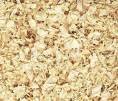Characteristics of Good Horse Bedding
"There are many horse bedding choices.
Types of horse bedding and characteristics.
 Don't let your horse stand on wet or hard stall floors. Horses need extra cushion and dryness in their stalls to help promote healthy hooves and overall general health. Horse bedding provides comfort and warmth for your horse and provides traction to help keep your horse from slipping.
Don't let your horse stand on wet or hard stall floors. Horses need extra cushion and dryness in their stalls to help promote healthy hooves and overall general health. Horse bedding provides comfort and warmth for your horse and provides traction to help keep your horse from slipping.
Horse bedding materials today are excellent for maintaining such conditions. Traditional straw bedding is still available and popular, and provided it is clean and dust free, makes an excellent bed. The disadvantage of straw is the amount of waste that is generated with its use, which in turn may result in more work for you and increase in cost to dispose.
Many horse owners have turned to sawdust and wood shavings as horse bedding to help eliminate horse health concerns of dust and spores often present in straw and for better absorbency and reduced waste. Though saw dust does improve upon absorbency, it does not eliminate the dust problem entirely. Wood shavings on the other hand cut down further on dust, but do not absorb as much moisture and are slow to decompose in the compost pile.
Good Characteristics of Horse Bedding:
- High absorbing bedding will absorb urine better and reduce the level of ammonia odor in your horse's stall. The more absorbent the bedding is, the less bedding required, which means you use less and don't have to dispose as much.
- The horse bedding should be low in dust. A horse's respiratory system is not well suited for high volumes of dust.
- Ideally the horse bedding is easy to cleanup with waste.
A horse bedding with a high level of absorbency allows liquid waste to be contained in small areas so less bedding becomes dirty. The smaller amounts of contaminated bedding is quicker to clean and makes the bedding less expensive by reducing the amount of bedding required, and saves on the time and effort required for mucking out.
Rubber matting is a fairly new innovation providing a warmer, softer and more comfortable stable floor for your horse than concrete, brick, dirt, or wood flooring. Rubber matting also greatly reduces the amount of bedding required. A downside is horses don't like to lie down on bare mats. They prefer the comfort of a bedded area. So even though mats cut down on the amount of horse bedding needed, be kind to your horse and provide him with enough soft bedding to make him feel comfortable enough to lie down.
The most important factor to consider when choosing horse bedding is the health of your horse. Damp or wet bedding softens the horse's hooves and provides a bacterial breeding ground. Bedding that does not absorb well also allows more ammonia to be released and can irritate your horse's respiratory system, not to mention yours. Dusty or moldy bedding can also be a respiratory irritant. As a horse owner, the reality is you also have to factor in the cost and maintenance required to keep your horse's bedding in good condition. Good mucking methods will help to reduce waste and though some bedding products are seemingly more expensive at first, are often cheaper in the long run since it results in less waste.
What are Some of the Horse Bedding Choices?
- Straw. Common horse bedding used by many; however, it is not quite as common as it once was with many horse owners turning to processed wood shavings. Straw is not as absorbent as other commercially available bedding, but is often relatively inexpensive and decomposes quickly in your compost. Straw provides a nice soft bed for your horse.
- Sawdust and Wood Shavings. Sawdust is high absorbing, but if your horse is prone to respiratory problems it should not be used. A better alternative is wood shavings. Wood shavings are easy to muck out and can be found easily at lumberyards, feed stores, and bedding suppliers. Processed wood shavings are preferred over shavings found at lumberyards. The shavings at lumberyards may have harmful debris or toxic wood chips and dust. Processed wood shavings are more expensive, but are clean and dust free and do not contain any toxics that may be harmful to your horse. Sawdust and wood shavings do not decompose well in your compost pile.
- Shredded Paper and Cardboard. Very inexpensive as well as absorbent. It provides comfort for your horse; however, it compresses easily and requires a large amount to create a horse bed and to keep the bed maintained. Paper and cardboard bedding keeps your horse cleaner than other bedding products and does provide warmth. Disposing the bedding can be problematic and the most effective method is to burn it. Some horse owners use straw or wood shavings to supplement the paper and cardboard.
- Rubber Matting. Many advantages such as being completely dust free, drains well and is warm. The initial cost to put in rubber matting can be high, but the recurring costs to maintain bedding can be very low. It is very safe for your horse. Many horse owners add a little bedding, such as straw, to make a bed comfortable enough for you horse to lie in or if the drainage under the matting is not adequate.
No matter your horse bedding of choice, it needs to be cleaned at least once-a-day to keep it safe and dry for your horse. You don't want to promote a bacteria breeding ground or to allow soiled bedding to cause your horse health problems. Horse bedding that is consistently looked after does not take long to maintain each day.




